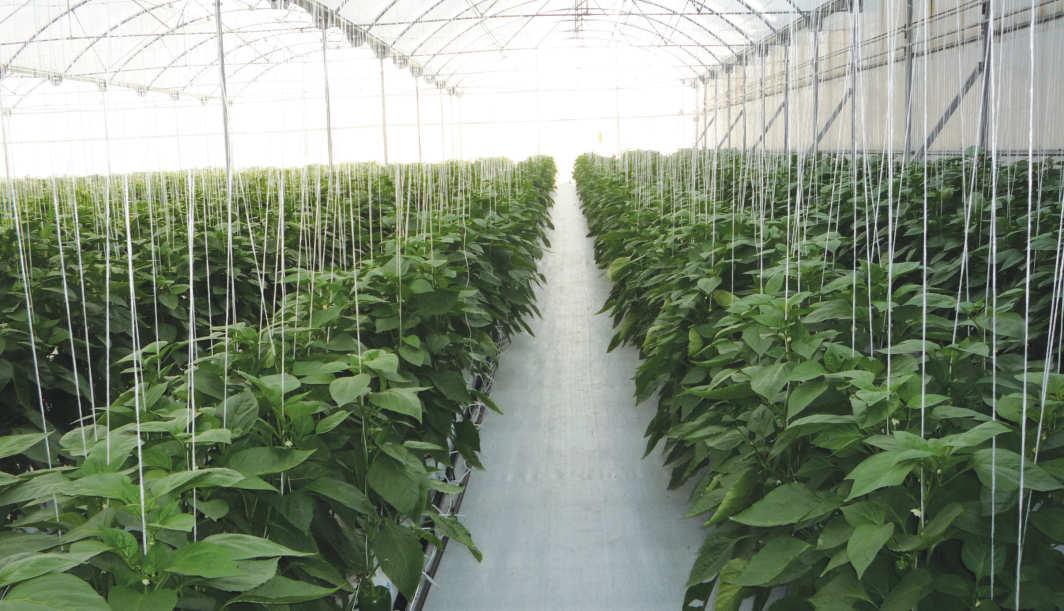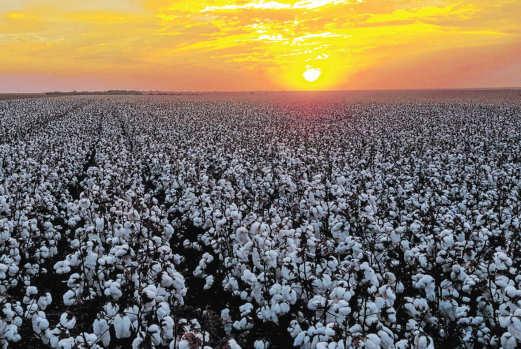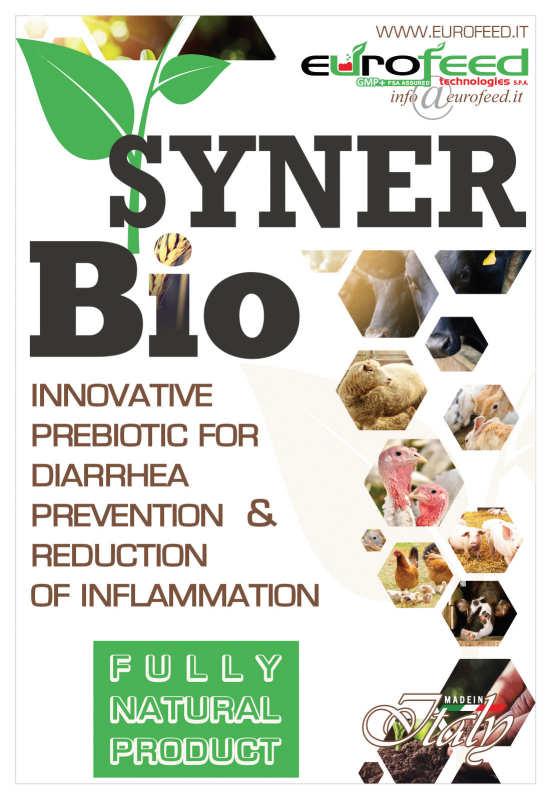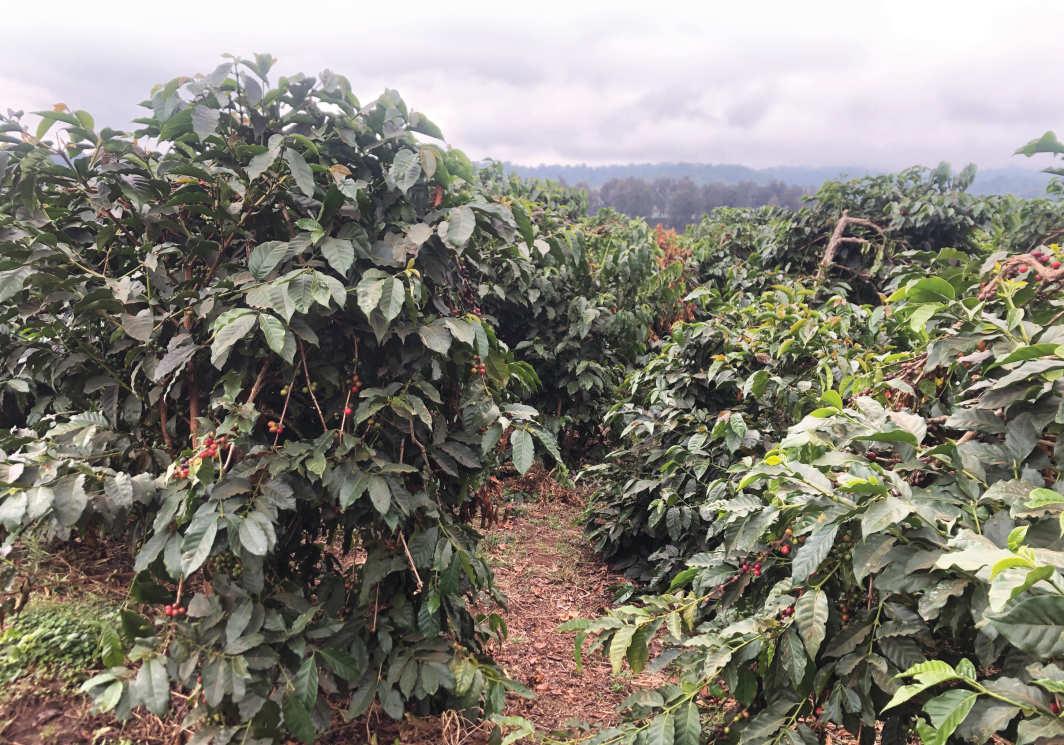
6 minute read
Climate change on crop nutrition in African agriculture
FOR MANY YEARS, scientists have talked about climate change and its consequences for agriculture, but the time for warnings is over as the effects are already being felt. No corner of the world can escape, although Africa is where both effects and economic consequences will be most keenly felt and contested.
Climate change causes higher temperatures and drier atmosphere and soils, but perhaps, extraordinarily-severe storms on an intermittent basis will cause a gradation of effects and consequences right across the African farming scene. At its extreme, crops which have traditionally been grown in a particular part of the continent may no longer be sustainable. Selection of more heat tolerant and drought resistant varieties may save the day, while transfer of production to higher, cooler and wetter altitudes may allow traditional crops to survive.
Coffee is a classic case in point with scientists claiming how the coffee industry in Ethiopia, and one of the world’s oldest, is already under threat from climate change. Avoiding a staple food supply catastrophe may mean switching to more drought resistant cereals, for instance, growing sorghum instead of maize. A combination of heat and drought may mean outdoor production of climate sensitive vegetables like tomato, capsicum pepper, aubergine and cucurbits is no longer viable, the positive alternative being environmentally- controlled greenhouse crop production. Likewise, paddy rice production may have to be modified in light of diminishing water resources.
Other considerations will centre on pest and disease prevalence. Hotter and drier growing conditions may increase the prevalence of pests and diseases, together with the levels of crop damage due to aggravating effects on the arthropod (insect or mite pest) or microbial pathogen, and/or enhanced susceptibility of the crop due to heat and drought stress. Classic crop in this context is cotton which is plagued with insect pests at the best of times, and especially seedling cotton during periods of heat and drought stress.
At the centre of all of this will be crop nutrition and fertilisation, how nutrients are applied and how much water is used to apply the plant’s nutritional requirements. Maintaining water supplies will be crucial, but so will the fertiliser formulations used, with foliar feeding increasingly important as the only sensible and sustainable way of providing the full complement of nutrients that crops need for high yields of high quality crop produce.
Industry insights from Omex Agrifluids

To obtain an insight into the thoughts of the industry on climate change, I spoke with Dr. Ben Odunlami, technical sales manager for Africa at Omex Agrifluids, a leading, global operating company in the design, production and application of soluble nutrient technology and products on a truly global scale.
Omex is based in the UK with administrative headquarters, research facilities and production plant located at Kings Lynn in the east of England. The company’s worldwide operations allow Omex to have a correspondingly global perspective on climate change and its ongoing impact on agriculture.
As a vast continent encompassing a huge range of climate and weather, Africa supports a correspondingly wide range of crops, but I was particularly interested in what Dr. Odunlami would have to say about the three crop types – salad crop vegetables, coffee and cotton – which I had picked out as especially vulnerable for specific reasons, to the effects of climate change, and most of all, the type of tailor-made soluble nutrient products that Omex can offer to farmers and growers to mitigate the impacts of climate change on growing crops.
Salad crop vegetables
In regard to mode and method of crop nutrition, Dr. Odunlami agreed that diminishing water resources and water availability for agricultural and horticultural cropping would mean measured and closely-controlled application of essential plant nutrients via foliar feeding would clearly come into its own, as a warming climate tightens its grip on Africa’s water resources.
“Foliar feeding puts the fertiliser in the form of water soluble nutrients onto the crop surface,” said Dr. Odunlami, adding how foliar sprays of soluble, essential plant nutrients can short-circuit soil-related problems, which are likely to intensify during periods of drought and water stress for crop plants. He concurred with my thoughts about the ‘ground zero’ option of transferring production of crops like tomato, cucumber, capsicum pepper and lettuce from the field and into environmentally controlled greenhouses. “Production within environmentally-controlled greenhouses opens up all sorts of opportunities like soilless growing systems, fertigation and hydroponics,” Dr. Odunlami said.
Given that water relations and water stress will become increasingly important factors for vegetable crops grown in the field, I asked Dr. Odunlami about specific items in the company’s product portfolio that are custom-designed for this very situation.
”Our number one answer for vegetable growers faced with increasing temperatures, tightening water supply and consequent crop stress is Omex Bio 20,” said Dr. Odunlami. In addition to a full complement of essential plant nutrients, Omex Bio 20 also features an exclusive organic component derived from a specific marine alga (seaweed) which imparts a strong biostimulatory effect.

“Omex Bio 20 and its biostimulant properties are critically important for getting those young plants off to a good start as seedlings start to establish, However, Omex Bio 20 is also applied repeatedly throughout the following weeks to sustain that fast, firm, sound and secure growth required, especially if crops face stressful growing conditions,” Dr Odunlami told African Farming.
Essential plant nutrients are exactly what the name says, with crop plants unable to do without them. That said, I asked Ben if there was a particular element in the plant’s nutrient profile that assumes elevated status under climate-induced, increasingly difficult growing conditions. “That would be potassium, also called the ‘gatekeeper’ element due to its critical control of water relations in the plant, including stomatal movements and the transport of sugars in solution,” Dr. Odunlami stated. “And before you ask, we have the answer in Omex K41 with its exceptionally high concentration (41% weight/volume) of the potassium macronutrient in an entirely soluble, readily available and utilisable form.”
Coffee
Africa’s coffee crop is under real threat with significant areas unable to support the crop in the longer term. In the shorter term, climate change and its effect on soil structure and soil water will likely impact heavily on coffee yield, including the ability of bushes to hold onto the berry crop as well as the size and quality of the coffee beans.

Enhancing strength and resilience across the board for coffee bushes, the berries and beans will clearly be the key to sustaining the crop in its traditional growing areas for as long as possible. The nutrient mainly responsible for plant tissue and bush strength and yield resilience is calcium, so I asked Dr Odunlami what was on the table at Omex for coffee farmers.
“Omex offers a number of soluble, calcium-enriched products with Omex CalMax (22.5% weight/volume calcium), the standard ‘fayre’ in the Omex product portfolio and now, thoroughly tried and tested in Asia on Arabica coffee.” Foliar applications of Omex CalMax enhanced the yield of coffee beans, elevated coffee bean quality and reduced the incidence of bean defects such as ‘black beans’ and ‘broken beans,” said Dr Odunlami.
Cotton
Cotton can be a uniquely profitable cash crop, but this fibre crop’s susceptibility to insect pest attack from when the seed germinates, and the first leaves push through the soil, until the split bolls are safely gathered in, means that profits do not always come easily. Cotton grown under normal rain-fed conditions is less susceptible to insect pests because rainfall will wash a high proportion of insects off of the plants. In addition, the cotton plants tend to grow more rapidly and therefore ‘away from’ and ‘out of’ insect pest attack.
Insect Pest
With less predictable and reliable rains, insect pest problems are likely to intensify. Cotton insecticides are increasingly falling out of favour with cotton farmers and cotton processing industries, which indicates increased reliance on crop nutrition to maximise plant resilience and mitigate pest-induced stress.
Omex’s answer to such challenges is a truly formidable portfolio of products for maximum plant strength and crop resilience throughout the crop cycle.
• Omex Bio 20, a ‘primer’ product used pro-actively in the very early stages of seed germination and seedling establishment and continued up until the squaring (flower-bud formation) stage.
• Omex Micromax for all-round crop nutrient balance during the first 5-7 weeks of the cotton crop. Contains the complete complement of micronutrients plus magnesium and sulphur.
• Omex K41, a high potassium (41.0% w/v) soluble nutrient product reserved for post-flowering cotton and best applied as foliar sprays together with Omex Foliar Boron (15% w/v) soluble boron.
• Omex CalMax (22.5% weight/volume) and Omex SuperMn (11.50% Mn weight/volume) and/or Omex Kingfol Mn (28.90% Mn weight/volume) to supply calcium and manganese respectively, especially in the critically important post-flowering period when cotton bolls are bombarded by bollworms, and even when the open bolls and white cotton lint can be ruined by cotton staining insects (cotton stainers), just prior to harvest. h










